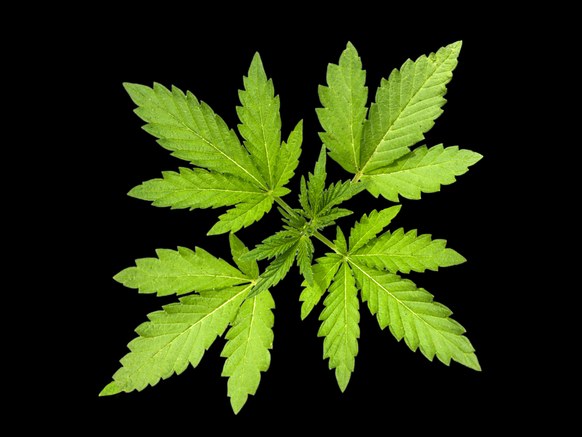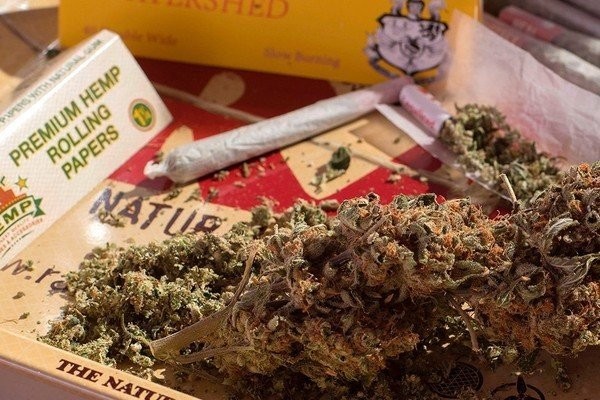COLUMBUS, Ohio — A new Columbia University study suggests medical marijuana laws contribute to greater recreational use and dependence on the drug.
Researchers compared non-medical marijuana use and cannabis use disorder prevalence among adults in 15 states that legalized medical marijuana between 1991 and 2012.
Illicit use and use disorders increased in all 39 states studied during that time, but were 1.4 percent and 0.7 percent higher, respectively, in states with medical marijuana laws than those without.
Deborah Hasin, who authored the study published in the Journal of the American Medical Association Psychiatry, said such laws may benefit some with medical problems, but legalization also has adverse public health consequences.
“A prudent interpretation of our results is that professionals and the public should be educated on risks of cannabis use and benefits of treatment, and prevention and intervention services for cannabis disorders should be provided,” Hasin said in a news release.
Marijuana legalization supporters said the study’s conclusions are inconsistent with other research and relied on data rarely used to measure drug use.
“This particular researcher has spent the last few years trying to link marijuana policy reform to an increase in marijuana use disorders,” said Mason Tvert of the Marijuana Policy Project. “Her studies rely on questionable data that appears to be the only data available to support her hypothesis, and she ignores all the evidence that contradicts it.”
An estimated 9 percent of adults who use marijuana become dependent on the drug. Cannabis use disorder is a relatively new term used by mental health professionals to describe marijuana dependence and abuse.
Ohio and 28 other states have legalized medical marijuana. Ohio’s law, passed last year, allows people with one of 21 medical conditions to buy and use marijuana if recommended by a physician. The state will license a limited number of growers, product manufacturers and dispensaries to sell marijuana to patients starting next year.
The study
Researchers reviewed national substance abuse surveys of more than 118,000 adults from three time periods: 1991-92, 2001-02 and 2012-13.
The study included 15 states that enacted laws between 1996 and 2012: Arizona, California, Colorado, Connecticut, Maine, Maryland, Massachusetts, Michigan, Montana, Nevada, New Jersey, New Mexico, Vermont, Oregon and Washington.
Researchers split the states in two groups: early-adopters who passed laws before 2002 and the rest.
The early-adopters saw higher increases of illicit use and cannabis use disorder from 1991 to 2001 than states without medical marijuana laws, but slightly smaller increases from 2001 to 2013.
The effect was greater on the later group of states.
From 2001 to 2013, illicit use increased 3.5 percentage points in states that had not legalized medical marijuana. Cannabis use disorder increased 1 percentage point.
States that enacted laws after 2001 saw larger increases: 5.1 percentage points for illicit use and 1.7 percentage points for cannabis use disorder.
Researchers credited the increases with greater availability, potency, perceived safety and acceptability of marijuana.
The study was funded by the National Institute on Drug Abuse and the National Institute on Alcohol Abuse and Alcoholism, part of the National Institutes of Health.
The limitations
The study used responses to the National Epidemiologic Survey on Alcohol and Related Conditions Survey, where participants were asked face-to-face about substance use. Researchers noted participants may have been more willing to report use as marijuana became more publicly acceptable.
The study didn’t account for differences in state policy, other than by separating Colorado and California from the other states.
California had higher use rates than other early-legal states when it legalized medical marijuana in 1996, so its medical marijuana law may have had little effect, researchers wrote.
Colorado legalized medical marijuana in 2000, but its retail dispensary model wasn’t in place until 2009. That policy change boosted medical marijuana patient applications from 500 per month to more than 10,000 per month.
The broader picture
Much attention has been paid to the effect on youth, and studies have not documented more teen use because of marijuana legalization.
A 2016 study, using data from National Survey on Drug Use and Health, concluded overall cannabis use increased but abuse or dependence did not. To the researchers’ surprise, cannabis use disorders dropped among individuals who reported using marijuana in the previous year.
Tvert also takes issue with the term “cannabis use disorder,” as marijuana is less harmful and addictive than alcohol and other drugs.
“If alcohol were treated in a similar fashion, countless responsible adult consumers would be labeled as ‘alcoholics’ just because they have a glass of wine with dinner or go out for drinks with their friends a few times a week,” Tvert said.
The findings from the new study reinforce the reality that cannabis use increases with legalization, wrote National Institute on Drug Abuse Director Nora Volkow, Deputy Director Wilson Compton and epidemiology chief Marsha Lopez in an accompanying editorial.
But they noted the study doesn’t address differences in state policy that might have a positive or negative effect.
For example, a 2015 study found opioid overdose deaths and hospital admissions decreased in states after medical marijuana dispensaries opened there. Other studies have linked marijuana legalization to an increase in poison center calls.
The nuances of state medical marijuana programs need to be studied so policymakers can balance potential harms and benefits, they said.
“In the meantime, it is clear that a robust system of education, prevention, and treatment is needed to minimize the negative consequences that might arise if cannabis use continues to increase,” they wrote.
credit:cleveland.com













